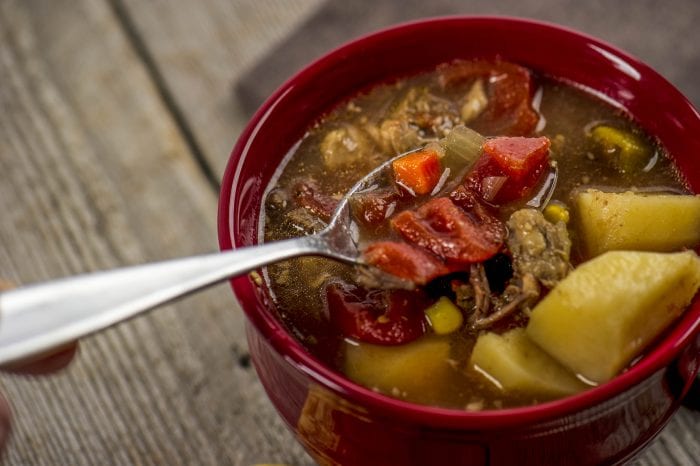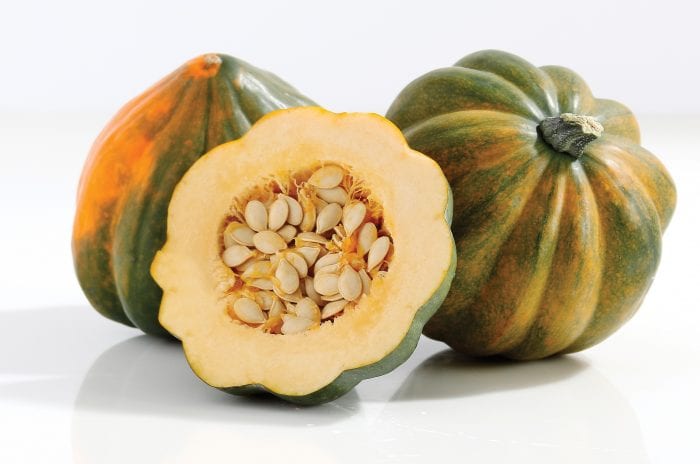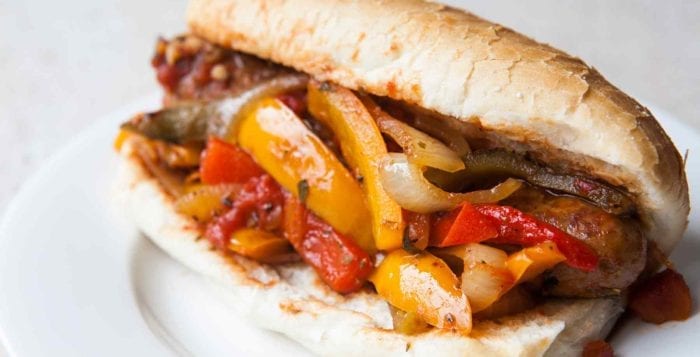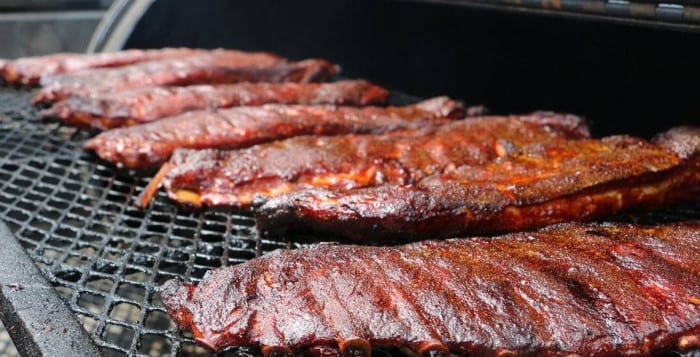By Barbara Beltrami
The way things look, it’s going to be a long, isolated winter indoors. So, determined to extend our outdoor life even as the weather gets chilly and the garden goes brown, we’ve treated ourselves to a fire pit for the patio and are hoping we can bundle up, hunker down and keep warm long into the season as we fortify ourselves with lots of hearty stews and soups. Here are three unusual and delicious stews to try.
Chicken and Chickpea Stew
YIELD: Makes 4 to 6 servings
INGREDIENTS:
3 tablespoons olive oil
2 celery ribs, diced
2 large carrots, diced
1 medium onion, diced
Salt and freshly ground pepper to taste
One 14 1/2 ounce can diced tomatoes w/ juice
2 cups chicken broth
1/2 cup chopped Italian flat leaf parsley
1 tablespoon tomato paste
1 bay leaf
1/2 tablespoon fresh thyme leaves
1/2 tablespoon chopped fresh rosemary leaves
4 chicken breast halves, bone in
One 15 ounce can chick peas, rinsed/drained
DIRECTIONS:
In an approximately 6-quart saucepan or pot, warm oil over medium heat. Add celery, carrots and onion and cook, stirring frequently, until onion is opaque, about 5 minutes. Season with salt and pepper and add tomatoes, broth, parsley, tomato paste, bay leaf, thyme, rosemary, and chicken breasts; be sure the chicken is submerged in the liquid. Bring liquid to a simmer, stir occasionally, and turn breasts once until they are almost cooked through, about 25 to 30 minutes. With tongs, remove chicken and set on work surface till cool enough to handle, 5 to 10 minutes; discard bay leaf. Meanwhile add chick peas to mixture and simmer until liquid is reduced and thickened, about 10 minutes. Remove skin and bones from chicken, cut meat into bite-size pieces and return to pot; bring stew to a simmer, then serve piping hot with crusty bread and a Caesar salad.
Pork and Sweet Potato Stew with Prunes
YIELD: Makes 4 servings
INGREDIENTS:
1 1/2 pounds pork tenderloin, trimmed and cut into bite-size pieces
Salt and freshly ground pepper
3 tablespoons olive oil
2 cups chicken broth
2 large onions, chopped
4 garlic cloves, minced
1 tablespoon ground cumin
1/4 teaspoon crushed red pepper
1 bay leaf
3/4 cup dry white wine
One 28-ounce can crushed tomatoes
3 medium sweet potatoes, peeled and cut into bite-size pieces
1 cup chopped pitted prunes, soaked in hot water
DIRECTIONS:
Preheat oven to 350 F. Season pork with salt and pepper. In Dutch oven or large enameled cast iron pot, heat half the oil over medium-high heat, add the pork and stirring occasionally, brown it on all sides, about 5 to 7 minutes. remove and set aside to keep warm. Meanwhile in small saucepan, over high heat, boil chicken broth until reduced by half, about 8 to 10 minutes.
Add remaining oil to Dutch oven, then onions, and cook, stirring frequently, until they are opaque, about 5 minutes; stir in garlic, cumin, pepper and bay leaf and cook over medium heat about one minute, until ingredients release their aroma; add wine and boil until reduced by half, then stir in tomatoes, broth and pork; bring to a simmer, cover and transfer to oven; cook for one hour. Return pot to stove top, add sweet potatoes; cook over medium heat until they are tender, about 20 minutes; drain prunes and add to pot; cook 5 more minutes; discard bay leaf. Serve hot with a side of cauliflower.
Sausage, Cannellini Bean and Broccoli Rabe Stew
YIELD: Makes 4 to 6 servings
INGREDIENTS:
1 tablespoon olive oil plus more for drizzling
1 large onion, chopped
1 pound sweet Italian sausage, cut into bite-size pieces
3 garlic cloves, chopped
2 cups chicken broth
1 bay leaf
Three 15-ounce cans cannellini beans, rinsed and drained,
1 bunch broccoli rabe, stems removed, then washed drained and sliced into 1” pieces
Salt and freshly ground black pepper to taste
1 cup freshly grated Parmesan cheese
DIRECTIONS:
Heat the tablespoon of olive oil in large Dutch oven or pot over medium-high heat. Add onion and cook, stirring frequently, until opaque, about 5 minutes. Add sausage and brown on all sides, about 5 minutes, add garlic and cook for 30 seconds, then add broth, bay leaf, beans, broccoli rabe, salt and pepper; bring to a boil, then cook, covered, over medium-low heat about 10 to 15 minutes, until broccoli rabe is tender. Discard bay leaf. Place in soup tureen and drizzle with oil and grated cheese. Serve hot with orzo.









